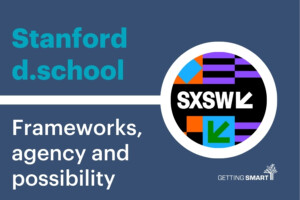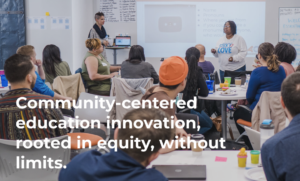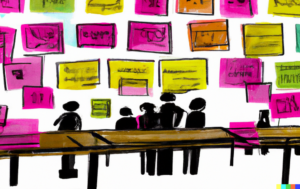ROI of Deeper Design for Online Higher Education Programs

Jason Gorman
The growth of student participation in distance education has started to hit a saturation point, and being “good” will no longer be enough to drive program growth and maximize student retention. We’re moving into a new era of online learning where institutions will need to find ways to create something great in order to successfully compete in the marketplace. Being “great” will mean understanding students’ needs and goals on a deeper level and using the specifics of that knowledge to design learning environments that support and challenge learners. Deeper knowledge of the students and better design translate to investing a little more in the early stages of the process. If an institution uses these insights to boost student enrollment and retention as well as to improve the overall student learning experience, it can see a very real return on its investment.
In the current white-hot higher education market, where traditional higher education institutions fight with MOOCs, competency-based learning and online resources for student attention and allegiance, every advantage counts. But there’s a new way to capture those elusive hearts and minds—Learning Experience Design. This discipline utilizes qualitative and quantitative techniques from the social sciences and User Experience (UX) to deeply understand the student population—who they are, where they’ve been, what they want and currently need and where they are headed.
If we take a deep and honest look at the student population we want to serve, even to the point of gaining empathy, we will be in a better position to know what they really need as well as to understand why. This knowledge enables us to carefully design how social interaction, support and interventions should happen.
When it comes to ROI of online and blended courses for an institution of higher education, there are two metrics that matter: 1) Student enrollment and 2) Student retention.
Enrollment
Let’s look at enrollment first. Enrollment is driven by marketing reach, and marketing is driven by a compelling and honest story targeted toward the potential student about how this program will help you, yes you succeed. Not students in general. You, the unique individual. Learning Experience Design practices can capture critical data to better identify your target audiences, what is important to them and how to best appeal to these individuals.
Retention
Now let’s look at retention. There are three primary factors that impact student retention: students’ self-discipline, the quality of interaction between faculty and students and student support as well as student connection with the institution. Institutions such as Utah State University understand that in order to boost retention rates, it is key to “determine student characteristics and needs, set priorities among these areas of need, identify available resources, evaluate a variety of successful programs and implement a formal, comprehensive retention program that best meets the institutional needs.” And institutions utilizing Learning Experience Design methods to capture this information are likely to enjoy a higher ROI than their competitors. These practices can help your students to thrive—and to commit.
- Emphasize student self-discipline. In recent years, research by Carol Dweck, Angela Duckworth and others has brought to light the importance of student persistence and discipline, which remains one of the many significant challenges facing the non-traditional student population. While we can do little to change the socioeconomic or cultural dispositions of such students, skills such as grit (persisting in the face of difficulties) and metacognition (understanding how today’s tasks inform future outcomes) have been directly linked to better long-term student outcomes. Scholarship has shown that these skills are not fixed at birth; they can be actively encouraged in students and taught. If these abilities can be taught, then they can be embedded in higher education course design as well.
- Foster quality interactions between faculty and students. Similarly, many of us remember a professor who gave little to no feedback beyond inscrutable letter grades. We remember this because it was a terrible experience. It was also terrible design. Learning Experience Design discovers how students and faculty want to engage with each other and then creates ways to encourage and facilitate desired, high-quality interactions.
- Better understand support and student connection with the institution. Finally, higher education learners comprise a stunningly diverse population. A common error involves assuming these students are more or less the same. We think we know what they want, how they should learn and how to help them succeed. But students are different across various institutions, across different programs within an institution and even from course to course. Further, if you have 20 students in a course, you can be certain that all 20 have significant variability in their learning preferences and needs. Learning Experience Design can uncover the dimensions of this diversity and design interactions that speak not just to a mythical “average” student, but to all students.
Learning Experience Design succeeds because, unlike traditional instructional design practices, it is not about merely conveying information, but designing for the total experience of the learner. And a satisfied learner leads to someone more likely to commit to a program and an institution for the long term, to sing the praises of his or her experience to others and even to become an enthusiastic alumnus.
This blog is part one of a three-part collection on Learning Experience Design and was originally published on the Six Red Marbles blog.
For more, see:
- Pathways to Success: Integrating Learning with Life and Work to Increase National College Completion
- MOOCS and Online Learning Entering the ‘Plateau of Productivity’
Jason Gorman is Vice President of Learning Experience Design Services at Six Red Marbles. Follow Jason on Twitter @jsngrmn.






0 Comments
Leave a Comment
Your email address will not be published. All fields are required.